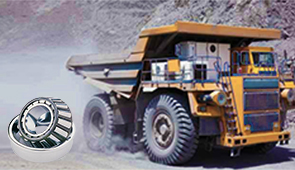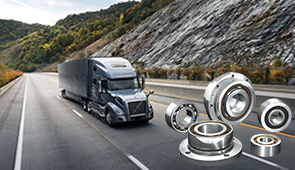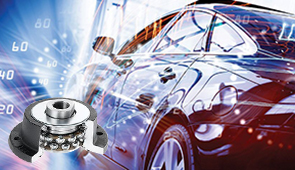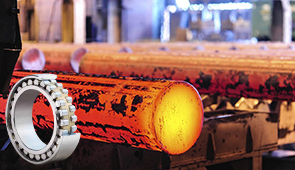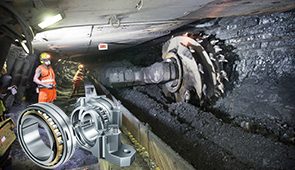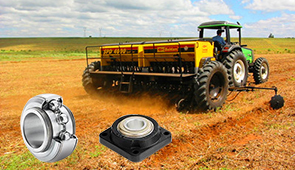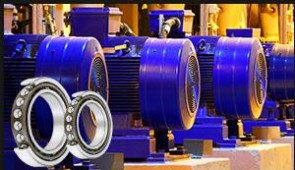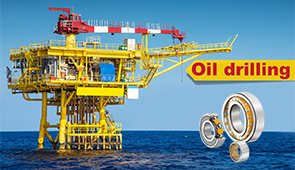Common Factors in What Causes Wheel Bearings to Fail
Proper wheel rotation is achieved with vehicle wheel-bearing systems. Now, these parts suffer wear and tear, or they fail altogether. This, in turn, aggravates problems such as rapid tire wear, poor handling performance, or worse — a potential safety risk. Besides addressing wheel-bearing problems, comprehending their causes could help retain a well-functioning, dependable automobile. In this guide, we will begin by discussing the most common reasons that corroborate the failure of the bearings. We will look at the indicators you should be looking for and how you can solve these problems to ensure that your bearings and car work harmoniously. This guide will equip you with important information regardless of your driving habits.
What is a wheel bearing, and how does it work?
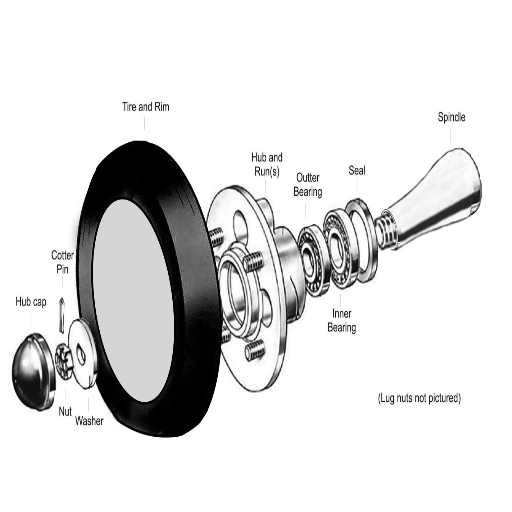
Understanding the function of a wheel bearing
A wheel bearing is one of the most essential parts of a vehicle’s assembly. It enables the wheel to rotate with the least friction. In short, it consists of several balls or rollers positioned inside a metal ring, also called a race. These components resist axial and radial forces from the vehicle’s weight and forces induced while driving.
To start with, wheel bearings have a few operating parameters which designs are set to withstand:
Load capacity: Since wheel bearings support the vehicle’s weight, they can immensely be exposed to pressure. For instance, passenger car wheel bearings will likely support over 317 kilograms (700lbs) for each wheel.
Operating speed: many wheel bearings are engineered to withstand high speeds that equal rotary motions or spinning of a wheel; for example, a wheeled vehicle traveling at a highway speed of 60 mph can see its wheel turning at rotary motions 800.
Material Parameters: Wheel bearings are mostly made from steel as they withstand high spread wear and extreme temperature with a pretty high hardness rated at 58-65 HRC Rockwell Hardness Scale.
Lubrication Parameters: Lubrication reduces heat, ensuring smooth operations with a low wear rate and enabling the equipment to outlast its anticipated lifetime.
In the end, wheel bearings perform the most critical functions: maintaining stability and reducing friction. They are instrumental in a vehicle’s safety and effective performance. Proper care and observance of parameters defined by the manufacturer are prerequisites for efficient performance.
Components of a wheel bearing system
The wheel bearing system is an arrangement that includes several components. Each component is important for the proper function and performance of the system. Below is a set of these components, along with some of their technical characteristics in a summary form:
Bearing Assembly: This is the primary part of the assembly, comprising the steel balls or rollers located around the metal housing. Bearings are typically manufactured with high-quality steel with a hardness of 58-65 HRC to resist continuous stress and force during rotation.
Hub: The hub connects the bearing assembly and the vehicle’s axle and helps support the wheel. It is made for robust purposes, employing notch tolerances to aid the alignment of the vehicle structure.
Seals: Seals are used to cover and enclose a ring of lubricant around the internal parts of the bearing to avoid entry of other parts such as dirt, water, and debris. Suitable seals are made to operate in temperatures varying from -40°F to 300°F (-40°C to 150°C).
Grease/Lubricant: Specialised grease can prevent friction and overheating, enabling the assembly to work frictionlessly. When lubrication is required, NLGI Grade 2 specifications are used to lubricate the wheel bearings to retain the maximum temperature stability.
Retainer or Cage: This component holds the rolling parts to make a set to avoid any interference between them. Generally, the retainer or the cage is made of lightweight yet durable material, usually steel or polymer.
ABS Sensor (if applicable): Nowadays, systems often have a built-in anti-lock brake system (ABS) sensor for braking functionality. These sensors can survive under extremely harsh conditions with high operational reliability.
Special attention is given to each component so that everything is within predetermined parameters. This ensures that the system operates in unison to provide rotating efficiency and balance. To ensure its durability, this system must be maintained regularly through inspection and meeting the technical requirements.
Standard wheel bearing types and uses
The most prevalent wheel bearings are ball bearings, roller bearings, tapered roller bearings, and needle bearings. Each type is explicitly intended for a particular use based on performance, speed, and features.
Ball Bearings. Ball bearings are relatively standard and are mostly used in situations where high speed and low friction are needed. They are most suited for smaller loads since they can take radial and axial loads, but with limitations. Typical parameters involve a speed factor (dn value) that does not exceed 500,000.
Roller Bearings: These classes of bearings help overcome larger radial loads by increasing the area over which the load is applied. Their slow rotational speed allows them to be used in industrial machines or heavy vehicles. This category has a load capacity of around 50,000 lbs.
Tapered Roller Bearings: Tapered roller bearings are used more than just auto wheels since they bear both radial and axial loads. They are mainly used in trucks and SUVs. These support low inertia and high angular variance, thus making them great for dynamic environments.
Needle Bearings: Needle bearings are miniature and ideal for use when space is limited but high load capacity is still necessary. They efficiently carry radial loads in closely packed configurations, with design characteristics such as a length-to-diameter ratio of more than 4 as a distinguishing characteristic.
Based on the comprehended working conditions such as load, speed, and environmental and operating conditions, one can select the right type of bearing for the application and achieve the needed efficiency and the required life span.
What are the top causes of wheel bearing failure?
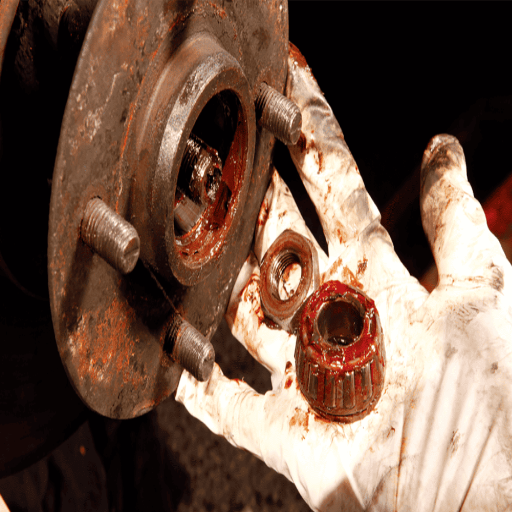
Impact of deep water on wheel bearings
The ability of wheel bearings to withstand deep water is significantly compromised as corrosion sets in. The insulation has lubricant and other components that get affected, leading to a moment when replacement is the only option. Customarily, it is known that the seals of wheel barrings are effective when it comes to protecting against contamination, such as dirt or even salt water, but constant stress from high pressure or water may render them inefficient. Eventually gone is the adapted lubricant performance; the wear settles in frequently along with friction.
So here are some key technical parameters that must be kept into account:
Seal integrity level- This defines precisely how much resistance the seal has against water ingress and whether or not you need an ingress protection rating IP (if applicable).
Lubricant water resistance- Adopting hydrophobic coverings in grease helps combat moisture.
Bearing material: Stainless steel is an excellent coating and is resistant to corrosion. As an alternative, specialized zinc hooping can also work.
Load and speed ratings- The key impact of water destruction makes silver containing lots more touch heaps or velocities, such as multipart bearing hourly, work better under such conditions.
Waterproof surface coatings and seals are a great first line of defense against damage that might be in the plan for wheel bearings.
How overload conditions affect wheel bearings
In such a manner, I’ll illustrate the reason, explain based on technical parameters, and explain the above reasoning regarding an operating overload situation. It is well known that excessive loads generate higher contact pressures within the bearing, which in turn promotes abnormal wear, rolling elements deformation, and even fatigue failure. For instance, micro-cracks are likely to develop when focal C is set as a ‘constant,’ and the load is always a particular constant that exceeds focal C. To make matters worse, overloading generates more frictional heat, which might alter the viscosity index of this lubricant, making it less effective and thereby causing more destruction.
If I were to break this down into key parameters:
Dynamic Load Rating (C): The value of the applied load does not surpass that recommended for that type of bearing.
Speed Limits (n): The rotational speed of the bearings under overload can be high; hence, the high temperature gets to be exceeded.
Lubrication Viscosity: When film thickness is involved, it cannot prevent metal surfaces from overlapping when larger loads are imposed, as certain lubricants would be needed.
Material Strength: Overloads tend to overload the yield strength of the bearings’ inner race, outer race, and retainer, especially if the component has already been stressed repeatedly.
It is the perfect practice to minimize losses against overload conditions by simultaneously considering the specified load and speed limits and selecting the proper lubrication for the bearing.
Influence of potholes on bearing integrity
Potholes represent a significant threat to bearing integrity because they create an impact force and vibration when hit, deforming the bearings’ structure. For instance, when a vehicle goes over a pothole, massive shocks are applied to the bearings, which can exceed the load limit set for the bearing. This predominant hit can cause bearings to deform the plastic and contribute to their surface fatigue, escalating the process and ultimately leading to bearing failure.
The necessity of taking into concern the key aspects include:
Dynamic Loads: C may also be considered the dynamic load rating. Put it simply, it may also be referred to as the force cutoff needed for a bearing to shaft be in contact with each other with enough roughness over its surfaces not to be obliterated by an engaging force of set threshold.
Ability to Withstand Shocks: Enhanced through lubrication, its material properties are resistant enough to sudden stress.
Degree of Frequency: Fatigue is amplified through exposure, leading to accelerated bearing deformation and encouraging frequent servicing measures and supervision.
If Potholes are understood while the bearings are maintained actively, their lifespan and functionality can improve. It is even possible to reduce the detrimental effects a pot-holed surface might have on a vehicle.
How can you detect a bad wheel bearing?
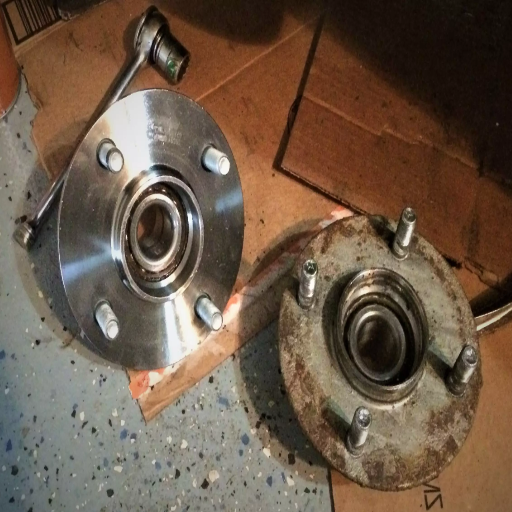
Signs and symptoms of a bad wheel bearing
We all know that bearing replacements are not common repairs. Still, from my experience, detecting a faulty wheel bearing requires focus on unusual sounds, odd sensations, and performance issues. Here are the most common signs and their corresponding technical parameters:
Unusual Noises: Gauge changes to a growl or continuous noise as the vehicle accelerates, which tends to happen due to an uneven load within the bearing due to wear and tear.
Excessive Wheel Play: If, while moving the wheel, you notice looseness or wobbling, which would typically be caused by axial or radial tolerances along the wheel’s bearing. Most vehicles do not have axial and radial clearance tolerance beyond 0.002-0.005 inches.
Uneven Tire Wear: Misalignment from damaged bearings can cause tires to have irregular wear patterns. For this reason, precise alignment and balance should be intact, according to the manufacturer’s specifications.
Vibrations: At high speeds, an excessive vibration would be noticeable through the steering wheel, indicating a defective bearing. Ideally, the ISO 10816 universal standard for limits on vibration during the operation of machines should apply here.
ABS System Warnings: Driving with faulty bearings would interfere with the wheel’s rotation and cause ABS sensor errors.
This means that the designed dashboard alerts go off, especially when reading from the sensors is out of range.
If these indicators are known and technical parameters are referenced, the condition of wheel bearings can be carefully evaluated and action taken in time.
Consequences of ignoring a bad wheel bearing
Neglecting a faulty wheel-bearing unit can result in several drawbacks, be it in terms of safety or a vehicle’s performance. From my experience, one of the first repercussions is the likelihood of wheel bearings losing their sturdiness, which may happen frequently when the vehicle is at high speeds. This is because the bearing that has been compromised is failing to carry the spinning load, thus undergoing significant levels of wear and tear, resulting in instability.
Bearing problems can also lead to misalignment and consequent issues, such as wheels bearing uneven tires, which can be a major issue. In a sense, misalignment occurs whenever a wheel is forced out of its given range of tolerances- in most cases, the vehicle manufacturers provide this range.
Another noticeable reason is the unnecessary overuse of other vehicle parts, such as those within the suspension system. In particular, vibrations resulting from the faulty bearing might reach levels more significant than those specified within the ISO 10816 standards for vibrations, which speeds up the depletion of suspension components.
A bad wheel bearing can also play a part in malfunctioning the ABS sensors. Whenever the speed threshold/limit reaches a figure lower than or higher than what they were supposed to be, warning signals turn on in the dashboard. If someone fails to heed these signals, their safety and the vehicle’s life are jeopardized, making maintenance a critical task.
Tools and techniques to identify wheel bearing issues
A systematic assessment of every engineering structure is the best practice in almost any manufacturing industry. Proper use of diagnostic tools and an evaluation can help identify the source of the problem. Below are some effective methods paired with corresponding technical parameters:
Check for any Regular Sounds: One more simple as well as the most observing the simple and treble family such as that of men drift whine growl reel, especially when the vehicle steers. Here, the bearing components would be mostly destroyed because excessive clearance or wear would be present.
Wheel Rotating Test: A physical inspection method requires the car to be jacked firmly over; once done, it would allow for the wheel to rotate. It is important to note any restriction, rasping, wobbling, or noise cases, as these could indicate misalignment or a failed bearing. To further strengthen the case, any lateral movements greater than .005 inches (0.127mm) would further confirm wear and tear.
Attached Rollers are Monitored: An abnormality in the wheel and hub assembly can be identified using a vibration analysis technique combined with sophisticated tools. Yeah, ISO 10816 is relevant when the measurement is done. Acceleration, in turn, reaches over 20 mm/s² and out of normal limits, becoming a problem.
Measuring the Heat that the Bearing Emits: Heat emission on the bearing region can be detected using infrared thermometers or thermal imaging cameras. This may suggest insufficient lubrication or high friction in the area. Temperatures exceeding 120°F (49°C) while driving usually indicate a fault.
ABS Sensor Diagnostics: Stripped hydraulic pipelines align mentally and biomechanically with the force applied to the steering wheel, which indicates the bearing. It would be helpful to scan the OBD-II device for ABS-related error code anomalies, such as discrepancies among the wheel speed sensors. Comparing sensor readings taken in a dynamic mode may highlight deviations caused by misalignment or damage to the bearings.
All these precision tools and procedures for accurate measurements stress that wheel bearing problems can be easily identified. Therefore, an optimal vehicle performance with a high safety level is achieved.
How can premature failure of wheel bearings be prevented?
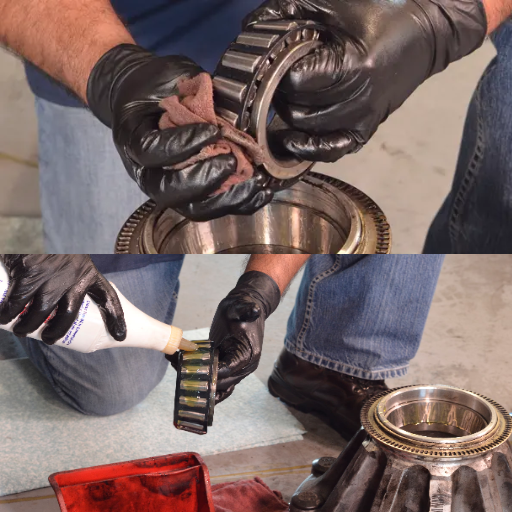
Importance of proper lubrication and sealing
To avoid bearing premature failure, it is necessary to use appropriate grease and seal the wheel bearing against moisture penetration. I recommend that the correct type and volume of lubricant be used first. For example, NLGI Grade 2 grease is a high-quality lubricant with a viscosity suitable for normal operating temperatures that lowers heat and friction. Likewise, appropriate sealing encourages that water, dirt, and debris do not ingress into the bearing assembly, which would, in turn, cause rust and abrasion.
During the fitting or replacement of the wheels, I pay attention to seals and their placement, checking if they show any signs of wear or tear. Depending on the type of seal, its operating temperature limits might range from (-40F to 300F, -40C to 150C) which guarantees its functionality across various environmental conditions. The combination of appropriate grease and proper seals for the bearing seems to improve the wheel bearing’s performance and life.
Role of quality wheel bearing components
To begin with, the best bearing races and rolling elements require better materials, such as hardened steel or ceramics, to withstand wear, fatigue under load, and corrosion. Regardless of operating extremes (usually between – 40 to 150 °C), these metals do not quickly lose their dimensional stability to compromise their applications. Lastly, the best-bearing components will often have stringent constraints regarding tolerances since it can affect the center of balance to the bearings during assembly – which leads to better textures and smooth operation during motion.
Precision manufacturing with the rolling elements’ tolerance of less than or equal to 1 µm decreases vibrations and noise levels during rotations while improving efficiency. Likewise, advanced heat treatments and different involutions can extend joining surface hardness and overall component life. All these can ensure a quality bearing component.
Consequently, when the applications or demands of a specific bearing situation change, so will the limiting components, resulting in dynamic load capacity (C), static load capacity (C0), and other quality components that will need to undergo testing on impact, thermal, and contamination stability, to name a few criteria. So investing in quality wheel casing components leads one to achieve the effectiveness one aims for, whether in minimizing maintenance costs or overall performance.
Regular maintenance and wheel bearings checked
Every vehicle has internal components that are integral to its good performance. For instance, wheel bearings require the utmost attention from owners because their lifespan and usability determine the vehicle’s life. For me, it is of utmost advantage to routinely inspect the components of the bearing to see if there are any signs of deterioration or significant movement in the parts of the bearing. To guarantee that the said components are healthy earth, the standpoint in focus is maintenance, and herein, I ensure the following steps are taken during maintenance.
Inspection Frequency: I check for damages and other such faults between a threshold of about 25,000 to 30,000 miles, but, ultimately, it depends on the manufacturer’s guidelines.
Grease Quality: I use multi-purpose waterproof grease that conforms to the NLGI Number 2 specification so that high operational temperatures do not impact the smooth functioning and movement of the wheels.
Torque Specifications: To avoid damaging the bearings inside the vehicle, I do not use excessive force to reinstall the relevant components; instead, I use the recommended axle nut, for instance, 180 – 250 lbs.
Load Ratings: To ensure the vehicle’s safe and reliable operation, I guarantee that the manufacturer’s specifications in the technical manuals regarding the dynamic load capacity (C) and static load capacity (C₀) are adequately met.
Sealing Integrity: It is important to keep dust and moisture outside the other parts of the vehicle; therefore, I check the seals for cracks and leaks.
After considering all these ongoing concerns and dealing with them individually, I will be able to minimize noise, manage vibrations, and, above all, ensure that the vehicle is safe to drive.
What are the best practices for replacing a new wheel bearing?
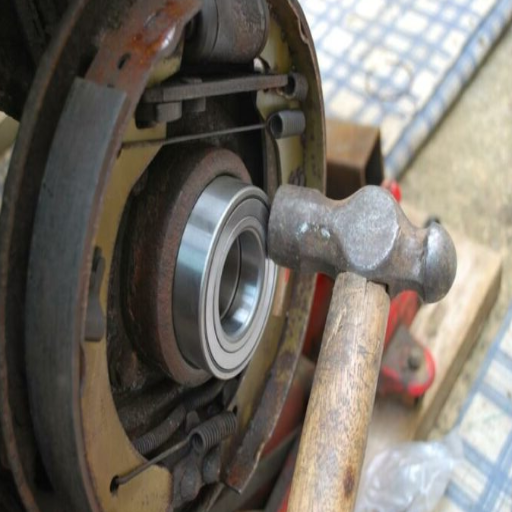
Steps to safely change a wheel bearing
When carrying out a wheel hub bearing assembly replacement, the following precautions are followed to safeguard oneself along with fulfilling the technical requirements:
Secure Vehicle Elevation: To elevate, support the automobile, and balance it, I deploy a hydraulic floor jack and jack stands. It also adds quality to the undertakings when the automobile is placed on a flat section.
Taking Out Wheel and Brake Components: I remove the wheel with a brake caliper and brake rotor to view the wheel hub. Some of these specifications include torque specifications, which are crucial to note for installation purposes so that overtightening does not occur.
Removing the Wheel Hub: I further detach the hub using the necessary tools. In many cases, a puller is required to remove stuck connector parts, and I look for any visible damage or corrosion.
Checking the Connected Parts: I check connected components such as the axle shaft and the hub and its related parts for any signs of wear or other forms of damage before I proceed to install a new bearing, ensuring a proper sealing performance is achieved in this step as well by making sure seals are not cracking or leaking.
Bearing Installation: I use a hydraulic jack to insert the new wheel bearing into the hub. The pressure applied on both ends of the bearing is set according to manufacturer standards to avoid the risk of damaging the bearing or misalignment. This often agrees with the right load class (C and C0 ratings).
Reinstallation:
- Axle Nut Torque: For torque application, I follow the prescribed specifications on the axle nut (e.g., 180 – 250 ft-lbs for most passenger cars); this guarantees proper fitting of the components without placing undue pressure on the bearing.
- Thread-locking Compound (if needed): This stops the hardware from loosening as time passes.
Testing the Replacement: After putting everything back together, I manually turn the wheel to test the rotation mechanism and check for obstructions or any sounds that may indicate an issue with the parts, then take a test drive to ensure everything engages and functions as intended.
Completing the process presented above gives me confidence that I can safely and effectively replace the bearings, guaranteeing the desired service life and performance of the vehicle.
Choosing the correct new bearing
When purchasing my new bearing, I ensure that a few technical parameters will help me guarantee its reliability and compatibility. Here are the primary parameters that I look for:
Load Ratings (C and C₀): The load rating lies on the lifetime operational load that the bearing can withstand, as indicated by the dynamic load rating (C). On the other hand, the static load rating (C₀) is the maximum load that the bearing can carry without moving, hence allowing for damage to the bearing. I always sit down and ensure these values align or outdo the anticipated load for that specific application.
Bearing Type and Design: Depending on the direction of the load, either a ball bearing, a roller, or a tapered bearing will be used (radial, axial, or both). This guarantees that the bearing will work properly in the specified application.
Dimensional Compatibility: I ensure that the bearing’s width, inner, and outer diameter correspond to the hub or housing dimensions. Wrong measurements or misaligned parts always cause issues, as the parts will give up prematurely.
Material and Coating: I use stainless or chrome steel for most of my bearings. These bearings provide high quality at the same time. Other than that, I also consider the need for a coating that will resist corrosion, especially in extreme environments.
Speed Rating: The maximum speed of the bearing must be able to work by the operating requirement. For this purpose, I usually use the RPM rating to ensure that there is not too much wear and that overheating doesn’t occur.
Environmental Factors: When moisture, dust, or heat are present, sealed or shielded bearings are installed with suitable lubrication to extend their life under those conditions.
By systematically evaluating all these parameters one by one, keeping in mind the manufacturer’s requirements and specifications and the nature of the application for which the bearing is intended, I arrive at a model bearing that will work efficiently and for a very long time.
Ensuring correct torque settings
In my professional opinion, proper torque application on bolts during installation is of utmost importance in maintaining the integrity and strength of equipment. To reinforce my point, I would highlight the following.
Instructions of a Manufacturer: I always check the manufacturer’s recommended torque values, as the torque values are set considering the material’s strength and usability when designing components.
Torque Wrench Calibration: I use a calibrated torque wrench while applying the torque, as this helps me avoid improper tightening, which can harm the bolt.
Engineering Mechanics Parameters:
- Thread Size and Material: I always determine the torque values based on the thread’s size and strength. Most instances require a bolt with a large thread, usually made of a strong material, or a combination of both.
- Lubrication Condition: It is a known fact that lubrication alters the friction coefficient. Thus, I consider whether the threads are dry, lightly oiled, or fully lubricated, as it can significantly impact torque.
Pre-Load Requirements: I ensure that the correct pre-load is applied for bearings to ensure that the bearing does not distort and wear out too soon. Usually, during this process, I suggest the required torque values to ensure an optimized grip is attained.
With this in mind, I would elaborate on the question of correct torque application to achieve the intended results by complimenting my claims with professional practice and insights.
Frequently Asked Questions (FAQs)
Q: Why do wheel bearings fail?
A: The most common causes of wheel bearing failure are improper installation, overloading, and lubrication. Additionally, exposure to extreme heat can also be a reason. All these factors compromise the bearing’s longevity and effectiveness. Fortunately, correct maintenance and a qualified installer can usually control these to some extent.
Q: What is the appropriate requirement for greasing if wheel bearings are used?
A: Grease is mandatory for wheel bearings to work correctly. It dramatically minimizes friction, allowing the wheel to move smoothly. However, interference through tampering, neglecting or insufficient greasing, or using unapproved greases and oils dramatically diminishes the wheel’s effectiveness, thereby compromising its performance. Regular maintenance and regreasing, as advised by the manufacturer, greatly help mitigate these effects and increase the wheel’s lifespan.
Q: Is improper installation of wheels the reason for fail of wheel bearings?
A: Yes, one of the essential causes of wheel bearing failure, along with misapplication, is improper installation. If a bearing is installed incorrectly, it can lead to misalignment, excessive load or stress, axial thrust, or distortion of the bearing components. This can result in the bearing being subjected to more than its capacity, which causes wear and damage to the bearing and, ultimately, premature failure. Always visit skilled mechanics, especially when replacing the wheel bearings, because they must be correctly fitted.
Q: What is the impact of heavy loads considered on wheel bearings?
A: The vehicle’s rated capacity is critical to wheel bearings and their effective functioning, as exceeding it can cause negative effects. Such stresses are referred to as overloading and cause damage and gradual deterioration of the functioning of the bearings to the point of completely failing and seizing. Especially when it comes to front wheel bearings of front wheel drive transmissions, whose sole purpose is to endure such weight and stress, always follow the recommended limits on load capacity of your vehicle to avoid bearing issues.
Q: What indicators suggest a wheel bearing is in poor condition?
A: Bad wheel bearings most typically display certain operational behaviors, namely grinding or other strange sounds during turns or a clattering sound during such turns; vibrations of the floorboards or steering wheel; indicators of uneven tire wear; and, in some instances, malfunctions of the ABS. It is critical to verify that a mechanic examines your vehicle because these symptoms indicate that the wheel bearing is unserviceable, which, if unattended, may lead to the wheels being dislocated from the axle.
Q: At what intervals should a wheel bearing be replaced?
The wear and tear on wheel bearings is, at times, very random and has no direct explanations, especially in some countries which have highly rough one-off road conditions. However, it is claimed that, on average, wheel bearings can sustain anywhere from 85 K to 100 K miles of driving. However, such averages are obliterated by several factors, including weather, driving, side-road conditions, etc. The average lifespan is 85,000 miles, while some other bearings may last longer, and some do not turn longer than two years. Replacement of bearings is not always the solution. Some vehicles require more than a single bearing replacement, and having vehicles inspected routinely reduces the chances of additional replacements.
Q: Can replacing wheels with a non-OEM part lead to issues with the wheel bearings?
A: First, consider the widespread availability of aftermarket bearings. The tragic reality is that non-OEM bearings will indeed result in problems down the line, even if they are sometimes a cheaper option. One must bear in mind that the precision of non-OEM parts is too far removed from OEM parts, which can cause the bearings to wear out too soon. Therefore, if aftermarket bearings are used, they should be suitable for the vehicle in question and of the required quality.
UCTH213-40J-300 with Setscrew(inch)
CNSORDERNO: Normal-duty(2)
TOGN: UCTH213-40J-300
SDI: B-R1/8
SD: 2 1/2
UCTH212-39J-300 with Setscrew(inch)
CNSORDERNO: Normal-duty(2)
TOGN: UCTH212-39J-300
SDI: B-R1/8
SD: 2 7/16
UCTH212-38J-300 with Setscrew(inch)
CNSORDERNO: Normal-duty(2)
TOGN: UCTH212-38J-300
SDI: B-R1/8
SD: 2 3/8
UCTH212-36J-300 with Setscrew(inch)
CNSORDERNO: Normal-duty(2)
TOGN: UCTH212-36J-300
SDI: B-R1/8
SD: 2 1/4
UCTH211-35J-300 with Setscrew(inch)
CNSORDERNO: Normal-duty(2)
TOGN: UCTH211-35J-300
SDI: B-R1/8
SD: 2 3/16
UCTH211-34J-300 with Setscrew(inch)
CNSORDERNO: Normal-duty(2)
TOGN: UCTH211-34J-300
SDI: B-R1/8
SD: 2 1/8









